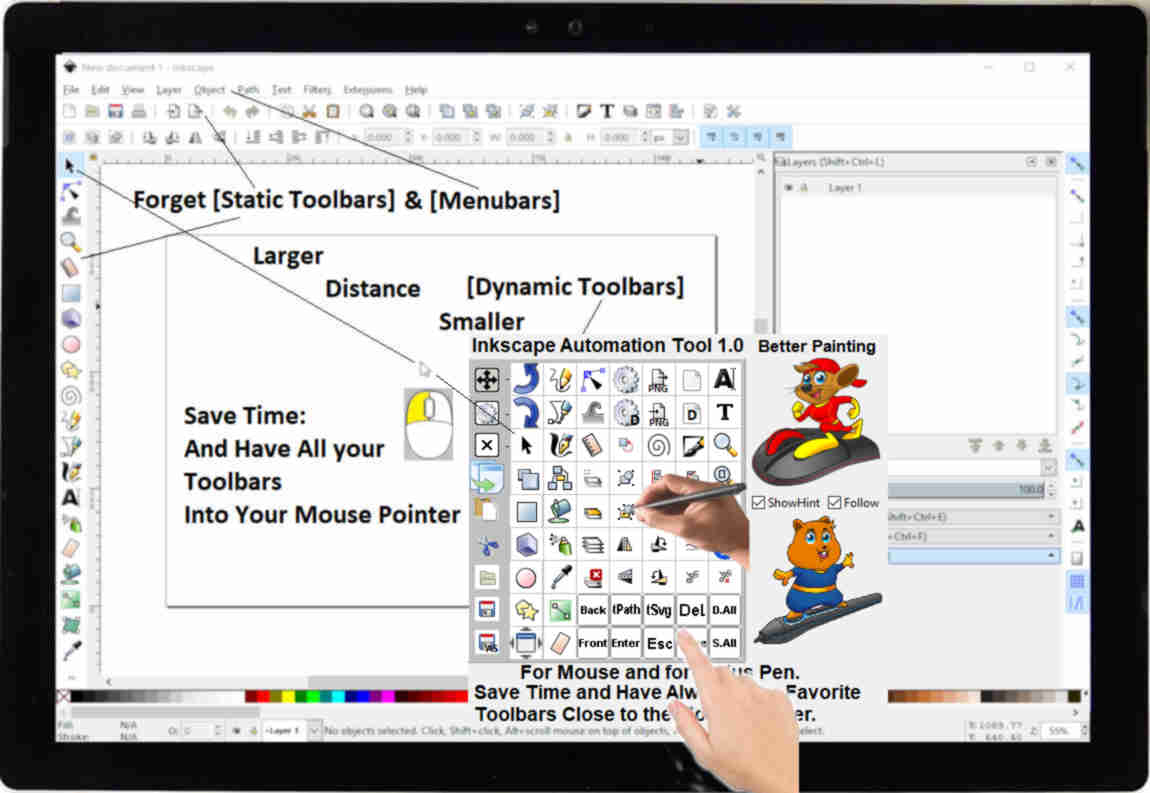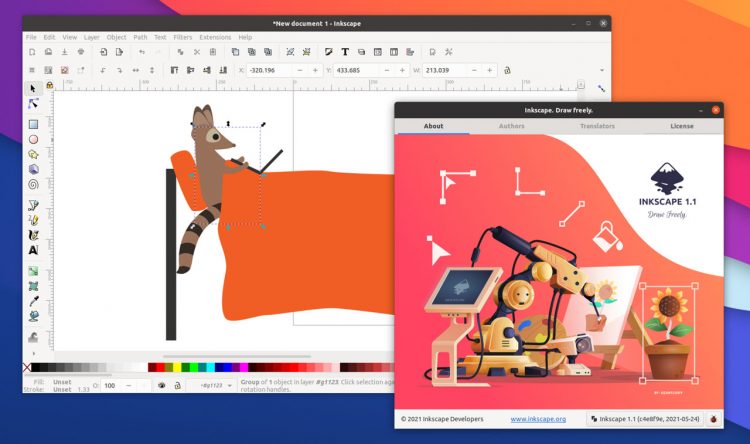

Click on them, and then edit them one by one. With the node tool selected, you can hover over your image, and identify the nodes. It’s the 2nd icon in the left side tool bar. To activate the node tool, hit the F2 key, or click on the node tool icon.

The node tool lets you work with those shapes and lines by interacting with nodes, and defining the types of curves and corners those nodes make. Vectors instead, start with shapes and lines, and these are calculated, mathematically, in the background. This means they let you paint, or draw, using pixels.

Many graphics programs are raster based, not vector based.

The node tool unlocks the power of Vector graphics. I want to keep it this short, so I’m just going to look at the node tool, and the circle (or ellipse) tool in this post. A range of other commands can also be found down the right hand side of the canvas. You can configure where these display however you prefer, but to start with, you will find the tools down the side, and specific actions relating to each of those tools display across the top. Inkscape displays most of the tools laid out around the drawing canvas. In this post, I’m going take a look at the main user interface, explore a couple of the main tools, and then look at some of the different things people are doing with Inkscape.įinally, I’ll finish off with how to get your hands on this great piece of software, and where to go to find out more on how to use it! User Interface But people use it for all sorts of things. I use Inkscape for diagrams, for web mock-ups and wireframes, for creating icons, and for annotating screenshots. Inkscape is both easy to use and incredibly powerful, and that’s a rare combination to find these days. It’s a tool for drawing 2D vector graphics, and its native file format is the World Wide Web Consortium’s standard for Scalable Vector Graphics, or SVG. It’s available for Linux (of course), but also for Windows, and for MacOS too. Inkscape is free and open source drawing software.


 0 kommentar(er)
0 kommentar(er)
